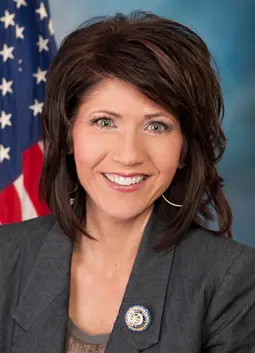South Dakota is at a crossroads as Governor Kristi Noem proposes a significant reduction in funding to the state’s tobacco prevention efforts. Since 2007, South Dakota has allocated $5 million annually from tobacco tax revenue to fund programs aimed at reducing smoking rates among its citizens. However, the governor’s new budget proposal seeks to cut this funding to $2 million, redirecting the remaining $3 million to the state’s general fund.

Kristi Noem
The proposed 60% reduction has sparked concern among health advocates who fear the repercussions it could have on public health and the financial strain on South Dakota’s healthcare system. Currently, cigarette smoking rates are on the decline in the state, with 15% of adults reported as smokers in 2023 compared to a national average of 11%. Despite this progress, smoking-related health risks remain high.
The South Dakota Quitline and local prevention efforts, which have received significant support from the state fund, are credited with helping reduce smoking rates. Tia Kafka, a spokeswoman for the state Department of Health, asserts, “The program has a track record of success, and we have seen a downward trend in tobacco use.” Still, the proposal to “right-size” the budget has been met with criticism.
Critics argue that reducing the budget could increase youth smoking rates and lead to higher long-term healthcare costs. Ben Hanson, South Dakota policy director for the American Cancer Society Cancer Action Network, considers this move as “robbing Peter to pay Paul,” as the funds are being diverted to other projects in a tight revenue year, including education savings accounts and reductions in funding to the state library system.
Colin Keeler from the South Dakota Bureau of Finance and Management notes that the current year saw the state collect $44 million from cigarette taxes and $11.8 million from other tobacco taxes. With the proposed cut, the state plans to use the remaining $2 million in tobacco tax revenue and an additional $1 million from the Centers for Disease Control and Prevention to fund tobacco prevention programs.
Despite these efforts, South Dakota will fall short of the CDC’s recommendation of $12 million in annual spending for tobacco prevention. Advocates are concerned that inadequate funding could stymie progress, especially as youth vaping in the state has seen a recent uptick, with 15.8% of high school students in 2022 reporting using vaping devices.
Jodi Radke from the Campaign for Tobacco-Free Kids predicts a 5% increase in youth smoking rates if the funding is slashed, potentially leading 300 more children to become adult smokers, 100 of whom may die prematurely, adding $4.8 million to healthcare costs over time. She argues, “Funding tobacco control is critical to impacting youth rates, so to cut funding from that really does impact outcomes in terms of kids becoming lifelong users.”
This proposed budget change not only affects public health but also South Dakota’s tight-knit communities, particularly Native Americans who smoke at double the rate of non-Native adults.
As the state faces this crucial decision, the debate centers on finding a balance between fiscal responsibility and the health of its citizens, while maintaining programs that have proven effective in reducing smoking rates and associated healthcare costs. The upcoming legislative discussions will be pivotal in determining the future of tobacco prevention in South Dakota.
For more information on this issue or to take action, readers can contact South Dakota News Watch journalist Bart Pfankuch at [email protected].